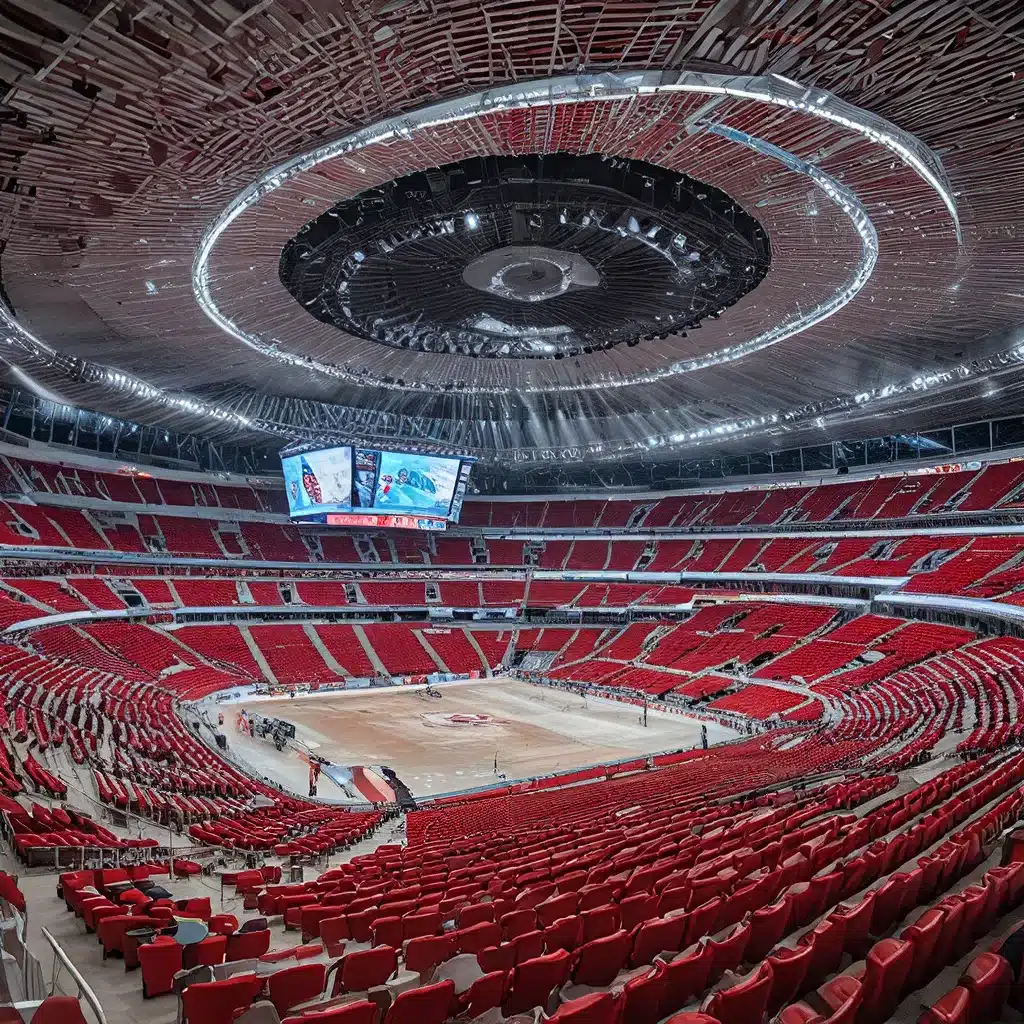
The Architectural Masterpiece on the Volga
The Kazan Arena stands as a testament to the city of Kazan’s rich history and its unwavering commitment to sport. Located on the banks of the Kazanka River, this architectural marvel was built to host the 2013 Summer Universiade, a prestigious international sports event. Since then, the arena has continued to captivate visitors and locals alike, serving as a hub for various sporting competitions, including the 2017 FIFA Confederations Cup and the 2018 FIFA World Cup.
The stadium’s design, crafted by the renowned architectural firm Populous, is a true masterpiece. Viewed from above, the arena resembles a water lily, seamlessly blending into the city’s urban landscape. The curved roofline, which gracefully drops from the main stands to the stands behind the gates, creates an impression of fluidity and movement. The arena’s most striking feature, however, is the world’s largest LED media façade, measuring an impressive 150 meters in width and 35 meters in height. This state-of-the-art technology not only enhances the visual experience for spectators but also serves as a canvas for captivating displays during events.
The Kazan Arena’s Unique History
The Kazan Arena’s history is deeply intertwined with the city’s rich cultural heritage. Kazan, the capital of the Republic of Tatarstan, is one of the oldest cities in Russia, dating back over a millennium. The city is renowned for its vibrant mix of Tatar and Russian cultures, which are reflected in the arena’s design and the events it hosts.
The arena’s construction was a pivotal moment in Kazan’s development, as it was built in preparation for the 2013 Summer Universiade. The event was a significant milestone for the city, showcasing its ability to host large-scale international sporting events. The arena was not only the venue for the opening and closing ceremonies but also played host to several competitions, including the world’s only stadium that saw 12 swimming records set during the World Aquatics Championships in 2015.
Embracing the City’s Diverse Identity
The Kazan Arena is more than just a sports venue; it is a symbol of the city’s unwavering spirit and its commitment to celebrating its diverse cultural identity. The stadium’s design incorporates elements that pay homage to the city’s rich heritage, such as the water lily motif, which is a nod to the city’s location on the banks of the Kazanka River.
The arena’s role as a hub for various sporting and cultural events further reinforces its importance within the city. Rubin Kazan, one of the most successful football clubs in Russia, calls the Kazan Arena home, ensuring that it remains a central part of the city’s sporting landscape. Beyond football, the arena has hosted a variety of other events, from world-class aquatics competitions to large-scale concerts and cultural celebrations.
A Legacy of Sporting Excellence
The Kazan Arena has established itself as a venue of international sporting excellence. As the host of the 2017 FIFA Confederations Cup and the 2018 FIFA World Cup, the arena has cemented its place on the global stage. Its state-of-the-art facilities, including the world’s largest LED media façade, have provided an unparalleled experience for players and spectators alike.
The arena’s legacy extends beyond its role as a host venue. It has also become a hub for sports development, with plans to expand its offerings beyond football. Following the 2018 World Cup, the stadium will undergo further renovations to accommodate additional sports facilities, including ice hockey and handball arenas, as well as beach volleyball and football areas.
Embracing the Future
As Kazan continues to evolve, the Kazan Arena remains at the forefront of the city’s development. The stadium’s role as a hub for sporting excellence, cultural events, and community engagement ensures that it will continue to be a vital part of the city’s fabric for years to come.
The arena’s commitment to sustainability and innovation is also noteworthy. The incorporation of the world’s largest LED media façade, which is both visually captivating and energy-efficient, is a testament to the city’s forward-thinking approach.
Conclusion
The Kazan Arena is more than just a sports venue; it is a symbol of Kazan’s rich heritage, its unwavering spirit, and its dedication to embracing the future. As the city continues to evolve, the arena will undoubtedly remain a central part of its identity, serving as a beacon of sporting excellence, cultural diversity, and community engagement. For anyone visiting Kazan, a trip to the Kazan Arena is a must, as it offers a unique opportunity to experience the city’s vibrant legacy and its vision for the future.

